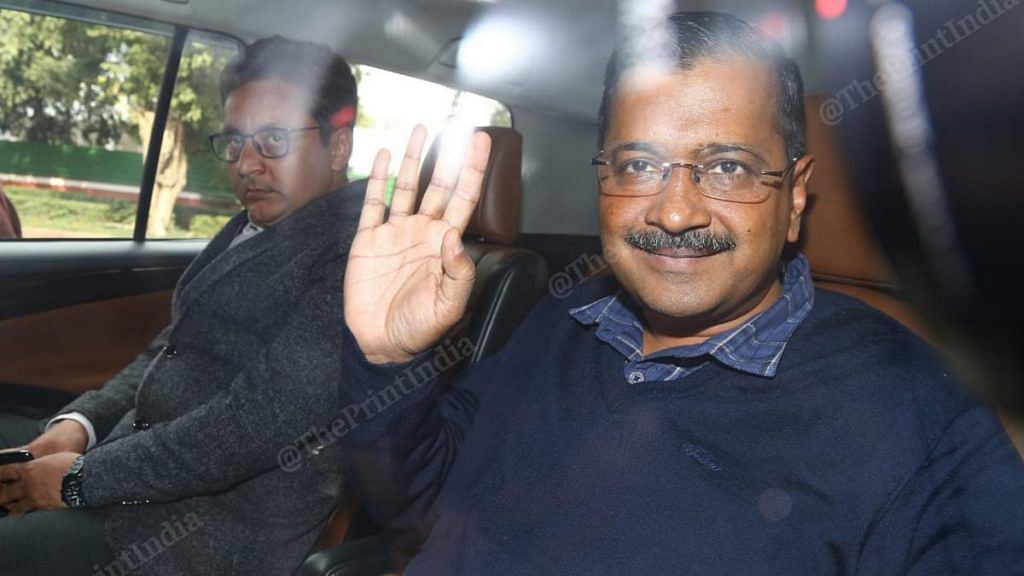The communal violence in northeast Delhi was of such a large scale that the death toll keeps rising from the hospital beds or with the recovery of unidentified bodies, days after the violence has subsided. Rumour-mongering has kept much of Delhi on edge. The man who incited the riots to begin with, BJP leader Kapil Mishra, has been leading peace marches. A judge who wanted prompt action was quickly transferred.
Yet, the public anger has been directed not just at the central government but also at the Delhi state government. The Arvind Kejriwal-led Aam Aadmi Party (AAP) comes across as not having done much in the last one week. It has been largely absent, doing formalities so that no one can say what it did – or didn’t do.
AAP members say it’s unfair to blame CM Kejriwal because the Delhi Police does not report to his government. But the AAP is not just a party in power. It was meant to be a people’s movement, many years ago. What the AAP needed to do most was speak loudly against the injustice of the BJP leadership and the Delhi Police. The AAP is not giving political voice to the people.
But the question is, which people?
Also read: How Arvind Kejriwal’s third attempt at national politics may play out
Have the cake and eat it too
We saw recently in the Delhi assembly election that the AAP wants the votes of both Shaheen Bagh-going Muslims as well as of Hindus who vote for Narendra Modi in the Lok Sabha. That’s like wanting to have your cake and eat it too — Kejriwal enjoyed such an impossibility in two assembly elections, 2015 and 2020.
But the war zone of northeast Delhi threatens to neither let Kejriwal have his cake nor eat it.
After AAP corporator Tahir Hussain was accused of storing petrol bombs on the roof of his house, the BJP and its proxies went into overdrive, accusing the AAP of having masterminded the violence. Soon thereafter, the AAP government signed the file that allowed prosecution of Kanhaiya Kumar, Anirban Bhattacharya and Umar Khalid in a (completely fraudulent) sedition case.
This suggests that the AAP was so rattled by the Tahir Hussain issue that it needed to show to the BJP voter it is not an extreme Left party. Hence the Kanhaiya card. This balancing act is reminiscent of Rajiv Gandhi, who thought he could keep both Muslims and Hindus happy. He ended up making both unhappy. The Modi voter will blame the AAP for Tahir Hussain (regardless of the truth about his role, which we don’t fully know), and the Muslim voter will blame the AAP for not standing up to the BJP.
The AAP thinks that only the noisy Left and liberals care about Kanhaiya, and only they think the AAP has intentionally abdicated responsibility in the Delhi riots. This is similar to how the AAP doesn’t go beyond lip-service on air pollution because it thinks only Twitter activists care.
Also read: No soft Hindutva, no Left Revolution, Kejriwal establishing a new centre in Indian politics
Neither secular nor commnunal
This time the AAP could be wrong. The perception of the AAP and the Delhi government abdicating responsibility in northeast Delhi could hurt them in the long-run — in both Delhi and nationally. Right now, their calculation is that Delhi’s Muslim voters have no option, and an election is not around the corner anyway. So, they have time to repair the damage. In other words, they are taking Muslim voters for granted just like “secular” parties are accused of doing.
Both Muslims and Hindus have died and suffered in northeast Delhi. Other than Muslims, the AAP is also wont to ignore this area adjoining Uttar Pradesh from where it doesn’t get too many votes. This should open the doors for a Congress revival in Delhi, but of course it is absent too.
The AAP even now is not doing enough in the riot-affected areas. It has been slow in setting up relief camps. Its MLAs and workers on the ground are not found holding hands of victims, helping the needy get aid in time. They have their answers and excuses for this: they say they have been doing things they are not getting credit for. Getting a big relief camp up and running when the Delhi Police was not assuring security, for example, was not feasible.
It comes back to optics, then. And the AAP is particular that it does not want to be seen as either “secular” or “communal”. It also does not want to be seen as being confrontational with the Modi government, because the latter can completely squeeze its functioning. We saw what happened around 2016 when Kejriwal went all out against Modi. They don’t want to do dharna politics anymore.
So, what do they want to do? Stick to the mandate and powers of the Delhi government, clip its political wings as if politics is limited to free electricity. With such an approach of conflict-avoidance, the AAP could be shrinking its own political space, in Delhi and nationally.
The author is contributing editor to ThePrint. Views are personal.
